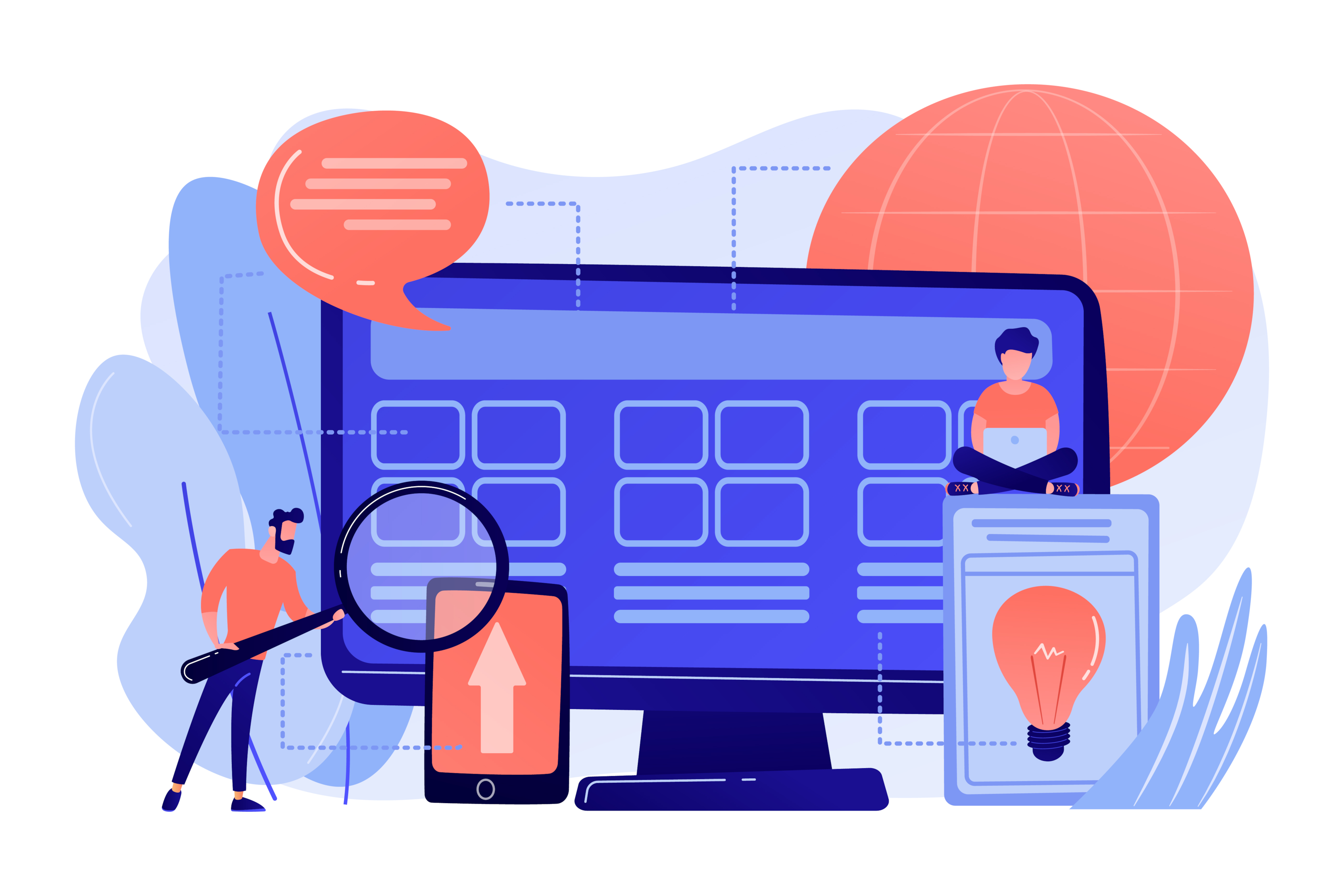We’ll increase conversions by
20-100+%
on your website.
Get a FREE Audit today
See how we can help your business increase conversion rates
Why Incorporating Pilot Testing Into Your User Research Can Significantly Enhance Results

Imagine embarking on a user research project, investing countless hours and resources into it, only to later discover that the findings are flawed and unreliable. To help avoid such costly mishaps and increase the effectiveness of your research efforts, incorporating pilot testing can be a game changer.
This blog post will delve into why including pilot tests in your user research procedure can significantly enhance results by identifying potential issues early on, refining methods for more precise data, and boosting overall confidence in outcomes.
Understanding User Research And Pilot Testing

User research involves collecting and analyzing data to gain insights into user behavior, attitudes, and preferences related to a product or service, while pilot testing refers to a small-scale experiment designed to test the feasibility of a new procedure or intervention.
Defining User Research
User research is a multifaceted methodology that aims to understand the needs, preferences, and behaviors of individuals who interact with a product or service. This approach helps businesses identify gaps in their offerings and make more informed decisions about design, functionality, and user experience.
Importance Of Pilot Testing
Pilot testing plays a crucial role in the user research process by allowing researchers to refine and develop their approach before undertaking a full-scale study. Conducting a pilot test enables the early identification of potential issues, resulting in more accurate and reliable data collection from participants.
This not only streamlines your development process and cost, but also ensures that your final product caters effectively to the needs of your users without the cost of compromising on quality or functionality.
Types Of Pilot Testing

Incorporating pilot testing into your user research can be done through various methods, each with a unique purpose and approach. The following are some common types of pilot testing:
1. Feasibility Testing: This type assesses whether a study or experiment is doable within the constraints of time, resources, and budget.
2. Usability Testing: In this type of test, the ease-of-use and overall user experience of a product or service are assessed to identify any areas that need improvement.
3. A/B Testing: Also known as split-testing, this involves comparing two different versions of a design or feature to determine which one performs better in terms of user engagement or conversion rates.
4. Beta Testing: This is typically employed for software products, where a group of users is asked to try out an application before its official release to detect any bugs, issues, or potential improvements.
5. Live Pilot Testing: This test entails launching the product or service on a small scale while closely monitoring its performance in real-world situations to provide feedback and identify possible challenges or areas for enhancement.
6. Focus Groups: In this method, a select group of participants discusses their experiences and opinions about specific aspects of a product or service under the guidance of a moderator.
Benefits Of Incorporating Pilot Testing Into User Research

Incorporating pilot testing into user research offers several benefits, including early identification of issues, more precise and accurate data, increased confidence in research results, and the ability to refine research methods.
Early Identification Of Issues
Incorporating pilot testing into user research can lead to the early identification of issues that may occur during the full-scale study. Using a smaller scale allows researchers to test their procedures, survey questions, and site files before conducting a larger study.
This way, researchers can evaluate how participants will respond and determine any potential roadblocks or problems in their research. For example, Google’s Android Beta Program involves pilot testing where developers release an Android operating system version to a selected group of users for feedback before rolling out the complete software update.
Pilot testing not only identifies errors and bugs but also provides insights on features that users find useful or unnecessary.
More Precise And Accurate Data
Pilot testing allows for more precise and accurate data during user research and analysis. By conducting pilot testing with a small group of participants before conducting the full-scale study, researchers can identify any issues with their methodologies or questions early on.
This helps to refine the research procedure and improve the quality of the data collected. For example, when designing a mobile app, conducting pilot testing first can be useful in ensuring all functions work seamlessly and accurately before releasing it to larger groups or the general public.
Increased Confidence In Research Results

Incorporating pilot testing into user research can lead to an increase in confidence when interpreting the results. Pilot testing is a helpful tool for discovering potential problems early on before conducting the main study.
Addressing these issues beforehand allows researchers to fine-tune their approach and methodology, leading to more precise and accurate data.
For example, take the case of a software company developing an Android operating system. Conducting a beta program prior to mass release can identify malfunctioning features through preliminary tests before installation processes while using feedback from users undergoing pilot tests makes it possible for testers or developers alike to determine what changes need to be made.
Refining Research Methods
Incorporating pilot testing into user research can help refine research methods and increase the accuracy of results. By testing research questions, participant selection, data collection processes, and even testing actual study environments through preliminary tests or smaller-scale pilot studies first, researchers can identify any issues or areas that require adjustments before conducting actual large-scale studies.
This process helps to ensure that data collected during the larger study is more precise and accurate.
Pilot testing also enables researchers to gain confidence in their findings by providing feedback on how well their procedures work or where modifications may be necessary.
Identifying these potential issues early on saves resources by preventing costly errors later in the installation process and full-scale performance review.
Best Practices For Conducting Pilot Tests

To ensure the success of your user research project, incorporating best practices for conducting pilot tests is key – from defining research questions and selecting suitable participants to choosing appropriate testing environments and implementing data collection methods.
Defining Research Questions
Defining research questions is a critical step in conducting user research and pilot testing. It involves identifying key information that needs to be collected during the actual study or pilot study, to answer specific research objectives.
Research questions should be clear, concise, and focused on the primary goal of your study. By defining clear research questions early in the process, researchers can ensure their pilot tests are conducted efficiently and effectively.
Selecting Suitable Participants
To ensure the success of a pilot test in user research, it is crucial to carefully select suitable participants. Here are some key considerations when selecting participants:
1. Define your target project and audience: Before recruiting participants, clearly define who your project and target audience is and what characteristics they possess. This will help you identify the relevant demographic, behavioral, and psychographic features required from prospective candidates.
2. Use appropriate recruitment techniques: Use different methods to recruit potential participants such as online platforms (e.g., social media), email lists, or through partnerships with industry associations. Make sure that the selected recruitment methods align with the evaluation criteria of your study.
3. Determine sample size: The sample size should be large enough to provide meaningful insights but small enough for researchers to manage data efficiently. Determine an appropriate sample size depending on your research objectives, and consider any limitations that may impact participant recruitment.
4. Screen potential participants: Conduct conduct a screening process to determine if prospective participants meet necessary criteria such as age, location, experience level, and motivation for participating in the study. Reject those who do not match these criteria.
5. Find diverse participants: To ensure diversity in perspectives and experiences for your pilot test, seek out candidates that represent various demographics such as age range, gender identity or expression, education level, among others.
By following these guidelines when selecting suitable participants for pilot testing in user research projects you can better guarantee consistent results throughout future stages of the process and beyond into product design and development.
Choosing Appropriate Testing Environments

Selecting a suitable testing environment is crucial to conducting successful pilot tests. The testing environment should mimic the real-world scenarios that users will encounter when interacting with the final product or design.
This means that the environment should be free from distractions and disturbances, allowing participants to focus on their tasks and providing researchers with accurate data.
Additionally, factors like lighting, noise level, and temperature can affect participant attitudes and behavior during testing.
Another important factor to consider when selecting a testing environment is accessibility for both researchers and participants. Accessibility ensures that the pilot test can run smoothly without logistical problems or delays caused by transportation issues or other unforeseen circumstances.
Implementing And Collecting Data on your Pilot Study
Once the pilot test plan is finalized, it’s time to implement and collect data. Here are the steps involved in this phase:
1. Recruit pilot group of participants: Reach out to the selected pilot group of participants and schedule a time for them to take part in the first pilot group and test. Ensure that all participants sign informed consent forms before participating.
2. Set up software testing in environment: Create a suitable testing environment that would simulate the real-world setting where the product will ultimately be used. Check that all necessary software testing equipment is in place.
3. Conduct the pilot test: Administer tests to each participant one at a time while observing their behavior and collecting relevant data.
4. Collect feedback: Gather feedback from participants using surveys or interviews after they’ve completed the tests. Feedback collected here helps you understand how users perceive your product or service and how improvements can be made.
5. Analyze results: Examine gathered data thoroughly, checking for patterns or trends, learning goals, identifying issues, learning goals and noting aspects of success.
6. Adjust research methods: Use insights gathered during the pilot test phase of future studies to refine research methods to improve accuracy, relevance, and efficiency in pilot studies.
How Pilot Testing Can Improve User Research Results

Pilot testing can significantly improve user research results by identifying problems early on in pilot experiment, providing insights into participant behavior and attitudes, and enhancing the reliability and validity of research findings.
Identifying Problems And Making Necessary Adjustments
One of the most significant benefits of incorporating pilot testing into user research is identifying problems and making necessary adjustments. By conducting a preliminary test with a selected group, researchers can obtain initial feedback on their method, survey questions, or product before implementing it on a larger scale.
The data collected during this phase could help developers refine their approach before rolling out any full-scale performance updates.
Providing Insights Into Participant Behavior And Attitudes
Pilot testing offers the unique opportunity to gain insights into participant behavior and attitudes. Conducting a pilot test can help researchers evaluate whether or not survey questions are clear, comprehensive and useful for the target audience.
Through pilot testing, we can also gain valuable insights into user preferences that we might have missed otherwise. For example, in one study conducted by a team of UX designers evaluating two online shopping experiences aimed at millennial women, they discovered that users preferred brands with more inclusive sizing options over those that didn’t offer this feature.
Enhancing The Reliability And Validity Of Research Findings
Incorporating pilot testing into user research can significantly enhance the reliability and validity of research findings. By conducting a small-scale preliminary test of entire system, researchers can identify potential issues and make necessary adjustments to entire system before implementing the research on a larger scale.
For example, in the development of an Android operating system, Google conducts beta testing to get feedback from a smaller group of users before releasing it to the public.
This allows for any bugs or issues to be identified early on and fixed before it is rolled out fully. Similarly, in user research, conducting pilot tests with chosen participants can help fine-tune usability studies, leading to more reliable results in future studies conducted on a larger scale.
Interpretation And Implementation Of Pilot Test Results

In this section, we will explore how to analyze and interpret pilot test data, make necessary adjustments based on feedback, and incorporate these results into the final design of new project or product.
Analyzing And Interpreting Data of your Pilot Studies
Once the pilot test has been conducted and data from the conclusion pilot testing has been collected, the next step is to analyze and interpret the results of the conclusion testing. This involves organizing and reviewing all of the data that was gathered during the conclusion pilot testing sessions.
Researchers use evaluation criteria to determine whether or not their research questions have been answered sufficiently.
One example of how this process might work can be seen in a study conducted by researchers at Google Android. As part of their beta program, they asked participants to install an updated version of their operating system (OS) on their phones and then tracked issues they encountered during daily use over several weeks.
Once enough data had been accumulated, they used various statistical analyses to identify areas where improvements were needed before deploying a full-scale OS update for all users.
Adjusting Research Process Based On Feedback
One of the key benefits of incorporating pilot testing into user research is that it allows for feedback to be incorporated into research methods, leading to improved outcomes.
Analyzing and interpreting data from pilot studies and tests provide valuable insights into participant behavior and attitudes, which can then inform adjustments to research methods in future studies.
For example, if a pilot test reveals that survey questions are confusing or irrelevant, researchers can adjust these questions before conducting a larger-scale study.
In addition to improving the overall quality of user research results, adjusting research methods based on feedback also enhances collaboration between researchers and participants.
Fostering an open dialogue with participants through pilot testing creates an environment for constructive criticism which provides opportunities for researchers to incorporate changes that fit within any contextual constraints specific to their target audience and production deployment parameters.
Incorporating Pilot Test Results Into Final Design Or Product
Incorporating pilot test results into the final design or product can significantly enhance the results of user research. As a best practice, it helps you to identify potential issues early on and make necessary adjustments before moving forward with a full-scale performance.
For instance, if you’re conducting usability testing for an app or website, pilot testing could involve running small groups through initial designs to identify areas that may not be intuitive or easy to use.
One successful example is Google’s Android beta program, where selected groups of Nexus users are allowed early access to new features before production deployment. This allows them to evaluate the feasibility and provide feedback on installation processes while still in development.
Successful Examples Of Pilot Testing In User Research

This section will highlight real-world case studies of successful pilot testing in user research, demonstrating how this approach has led to more accurate results, refined methodologies, and improved product design.
Real-world Case Studies
Real-world case studies demonstrate the effectiveness of pilot testing in user research:
1. A software development company was able to identify and fix several usability issues by conducting a pilot test of their new app before full-scale production deployment elsewhere.
2. A healthcare organization conducted a pilot study to determine the feasibility of implementing a new patient portal, which led to improvements in the installation process and increased satisfaction among users.
3. An online retailer used a pilot test to refine their survey questions and improve data collection methods, resulting in more accurate customer feedback.
4. A social media platform implemented a beta testing program for their Android operating system, allowing them to gather preliminary data and make necessary adjustments before the full-scale performance.
5. A design agency utilized pilot testing to evaluate different website layouts and features with a selected group of participants, resulting in better user engagement and overall success of the new project itself.
Making The Case For Pilot Testing In User Research
Incorporating pilot testing into your user research study can greatly enhance the reliability and validity of your own research and the future study itself. Conducting a pilot test serves as a preliminary data-gathering phase that allows you to identify potential problems and make necessary adjustments before conducting the main study.
Not only does this lead to more precise and accurate data, but it also increases confidence in your research results. For novice researchers, piloting provides an opportunity to gain experience while refining their research methods, ultimately leading to better-performing studies in the future.
Successful examples of using pilot tests in user research include pilot experiments, beta-testing software, or running smaller-scale evaluation studies with a selected group of participants.








